As soon as we go out shopping for our new home furnishing, a large number of options capture our attention. One of the accessories that aren't essential but will make homes more cozy are throws. A throw is a smaller version of a blanket that one can use while sitting on a lounger or any particular settee. It makes sitting and lounging around comfortable and enjoyable. A Cashmere throw is gaining more and more popularity owing to its lightweight yet immense warmth. But what is a throw and how is it different from a blanket? We shall know.
An opulent, light blanket composed entirely of cashmere or a blend containing a significant amount of cashmere fibers is called a cashmere throw. Because of their unparalleled warmth, softness, and style, these throws are treasured. Because cashmere is made of delicate, thin fibers, the throw is light enough to be used all year round and feels very soft against the skin. Cashmere throws give a touch of elegance and luxury to home interiors and are frequently used as decorative accents for chairs, beds, and sofas.
Cashmere throws are not only aesthetically pleasing but also useful, particularly during the winter months. Cashmere's inherent insulating qualities make these throws perfect for staying warm without being heavy or unwieldy. In addition to being lovely to drape, they may be used as travel blankets, adding a touch of sophistication and warmth wherever you go. A cashmere throw, whether for oneself or as a present, epitomizes coziness, style, and classic luxury.
Throw vs Blanket: What’s the difference?
Many don't realize that throws are different from blankets and at times mistakenly place large blankets around their settee. This is not appropriate as far as home decor is concerned. A throw is a smaller version of a blanket and is lightweight enough to be even carried around. Blankets are larger in size. Other than this, one major difference between a blanket and a throw is the usage. Whereas blankets are used for proper bedding and to keep one warm, throws are more aesthetic and decorative in nature. For this reason, throws are, at times, made of cotton, whereas blankets are always made from warmer materials.
What is a Throw?
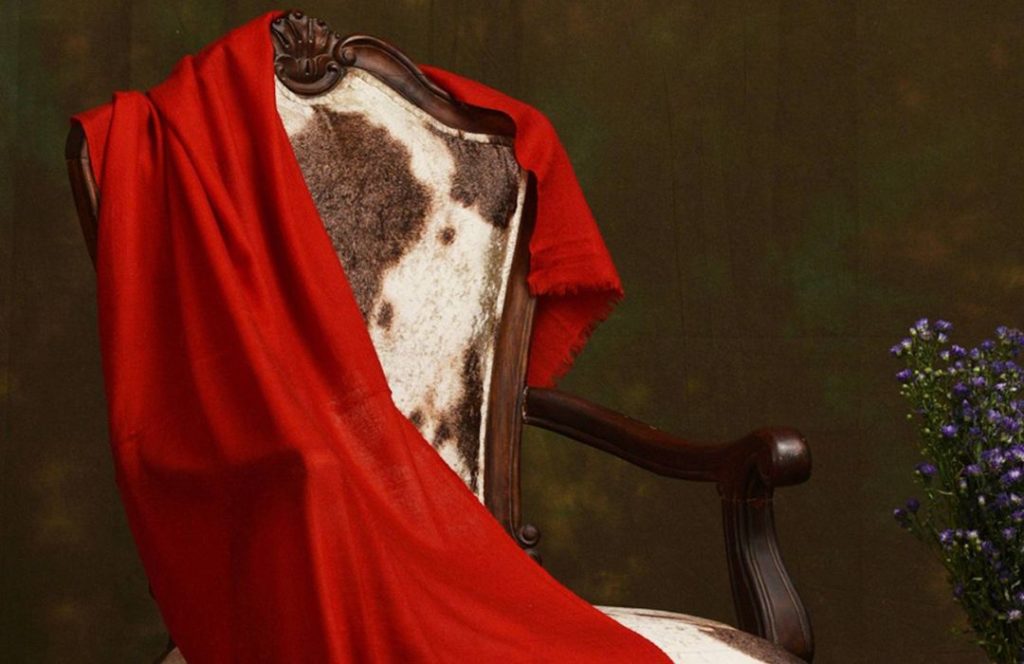
If you are a home decor patron or simply an admirer of aesthetic things, you will surely be fascinated with the idea of placing a contrasting coloured throw over your settee. The main purpose of a throw is to amp up your sitting area and style a particular room even more. Throws can be used over a bed, but usually, these are placed over sofas. These come in a variety of sizes, colours, and types, and hence can be both high and low-priced. The material used in the making of a throw is what determines the price of these decorative accessories. While cotton and polyester throws are the cheapest, fine wool and Cashmere throws are the most expensive.
Usually used for both practical and decorative purposes around the house, a throw is a little, light blanket. Throws are made to be quickly draped over furniture, such beds, sofas, and armchairs, in contrast to larger blankets or comforters. This allows you to add a touch of warmth, color, or texture to the décor of a space. They frequently serve as accent items, giving living areas a welcoming touch of comfort and flair. Cotton, wool, synthetic blends, and high-end textiles like cashmere are just a few of the elements that make throws so adaptable in terms of both comfort and style.
Throws have a very functional purpose in addition to their beautiful function. When lounging in a lounge area or on chilly evenings, they offer a quick and simple solution to stay warm. Throws are also portable because of their smaller size, which enables people to carry warmth and comfort with them wherever they go. Throws are a mainstay of contemporary interior design because they blend practicality and style, whether they are used as a comfortable wrap for reading or as a chic home accent.
Why should we use a Throw?
A throw is usually purchased for decorative purposes, but this never means that it is of no use. A throw can actually have practical applications. If the weather seems colder, but not as much as one would curl up in a bed, one can easily lay on a couch with the lighter throw wrapped around. The best way to warm up in a comfortable way is using a Cashmere throw as heavy blankets can’t be carried around from one settee to another. Throws are the best friends for pets. When your pet lays around the couch and wants to cozy up as a result of the cooler season, throws are an ideal option. Wool throws and even cotton ones are perfect for your furry friends. In addition to these, one can always carry a throw to a picnic where you feel the weather might change.
Your living area will look more stylish and comfortable if you use a throw. The ability of a throw to offer warmth and comfort without the weight of larger blankets is one of the main justifications for using one. A throw is a convenient method to stay warm whether you're reading a book, watching a movie, or taking a little sleep on the couch. You can have a quick, comfortable layer whenever you need it thanks to its lightweight construction, which also makes it easy to use and store.
In terms of design, a throw is a multipurpose piece that may improve the appearance of any space. By adding texture and color, draping a throw over a sofa, bed, or armchair quickly improves the décor and makes the space feel cozier. To update the appearance of a room without doing a total makeover, throws can also be changed out annually. Throws are essentially an indispensable home addition since they offer a straightforward yet efficient means of merging practicality with aesthetic flair.
On top of these all, throws give the perfect element of colour to your sitting areas. If your sitting area is a nude-shaded one, a warm brown will add the ideal amount of colour it needs. Be it your living room, bedroom, or home office setting, throws are simply the perfect colder season partners.
What is a Cashmere throw?
Out of all throws, the Cashmere throw is the most expensive one. The reason for this high price is the quality and processing of Cashmere to convert it into the fabric. To know more about Cashmere, let us discuss what it is and how it is processed to convert wool lumps to the fabric.
What is Cashmere?
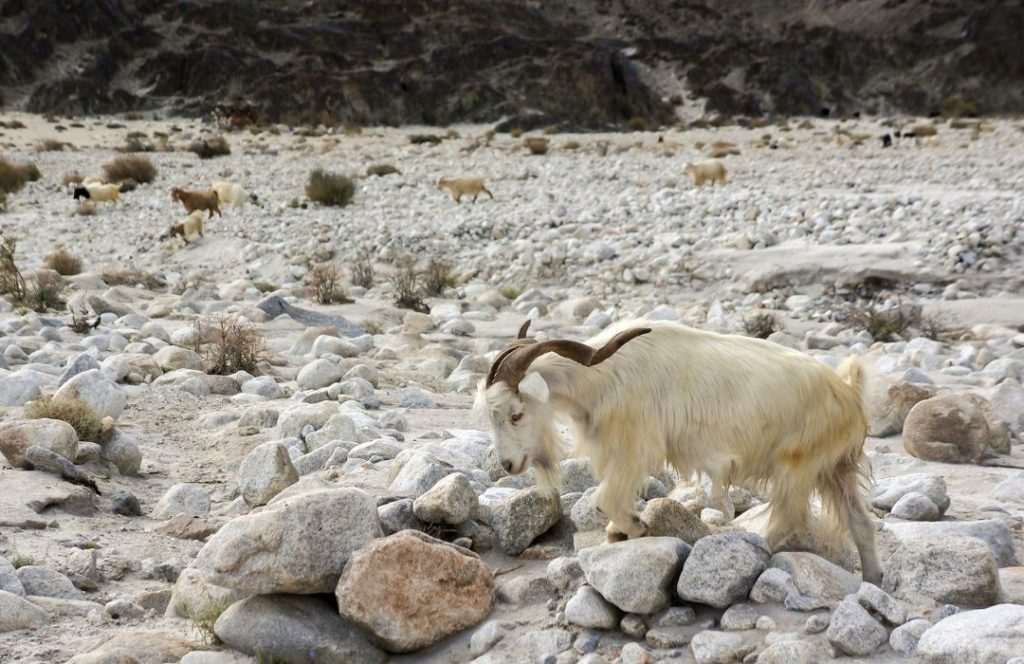
Cashmere is a variety of wool that is obtained from the Capra Hircus goats found in Ladakh. Fine wool is obtained from goats and used to make luxury textiles for centuries now. The best and the most famous use of Cashmere is the making of the Kashmiri Pashmina shawl which crossed all boundaries of the world to be owned by royal families in Europe, Asia, Australia, and America. The reason was the softness, smoothness, and finesse of the Cashmere fiber which was 1/4th of the human hair in diameter. It began to be used as shawls, apparel, and upholstery items for the royals and their courts.
Mostly found in places like Tibet, Kashmir, and Mongolia, cashmere is a pricey natural fiber that is extracted from the velvety undercoat of cashmere goats. But the finest is the Ladakhi Cashmere. Cashmere, renowned for its remarkable warmth, softness, and light texture, is regarded as one of the most upscale and desirable textiles in the world. Cashmere clothing feels wonderful against the skin because the fibers are far finer than those of regular wool. Cashmere's exceptional insulating qualities and softness make it the perfect material for winter clothing, such as sweaters, shawls, and scarves, because they offer warmth without adding bulk.
In addition, cashmere is valued for its resilience and capacity to hold its softness over time, particularly with the right maintenance. Cashmere is a rare and precious fiber because it is collected through a labor-intensive process, usually by combing the goats in the spring. Beyond its usefulness, cashmere is linked to elegance and luxury; because of its classic appeal, it is frequently utilized in high-end fashion.
Where does Cashmere come from?
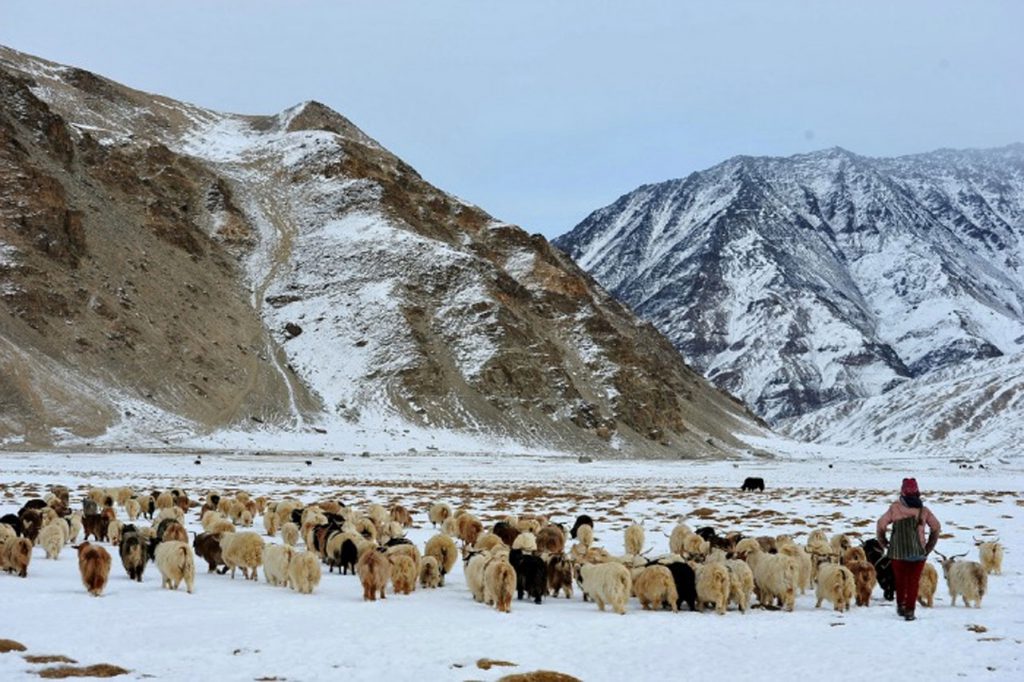
When we talk about the finest Cashmere wool, it is obtained from Ladakh. Even though Cashmere producing goats are found in many places in Asia, the best quality Cashmere comes from Ladakh, North India. The nomadic tribal population which resides here in the Changthang region rears a special exotic goat species. The Capra Hircus also known as Cashmere goat grows a fine fleece over the sensitive parts of its body, like the underbelly, neck, etc. This wool is Cashmere, but it is still to be processed and sorted as it is right now mingled with thick guard hair. Guard hair needs to be separated for 100% pure Cashmere fibre. Dehaired Cashmere is ready to be further processed, converted to yarn, and later to textile, apparel, or wrap accessories
How is Cashmere obtained?
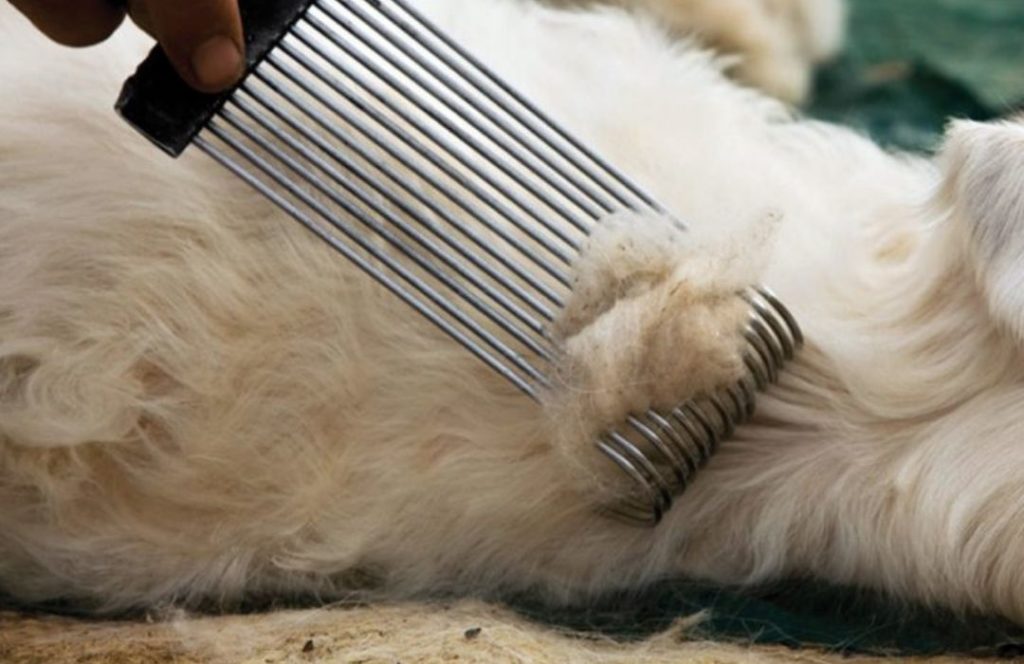
Cashmere wool is collected during mid-spring when goats tend to shed it naturally. It starts in March and ends in May. During this time, hormonal changes in the animal force it to shed the wool, and the goat rubs itself on rough surfaces to get rid of some portion of this warm fleece. The animal is ethically treated and wool is combed off its body with specialized tools and combs by professionals. When the entire wool is collected, it is sorted as per finesse. Pure Cashmere is later separated from guard hair and processed further.
Processing of Cashmere
Raw Cashmere wool is sent to Kashmir for further processing where women again clean it. They check for any foreign material or guard hair and send it for spinning only when they are sure about the purity of the wool.
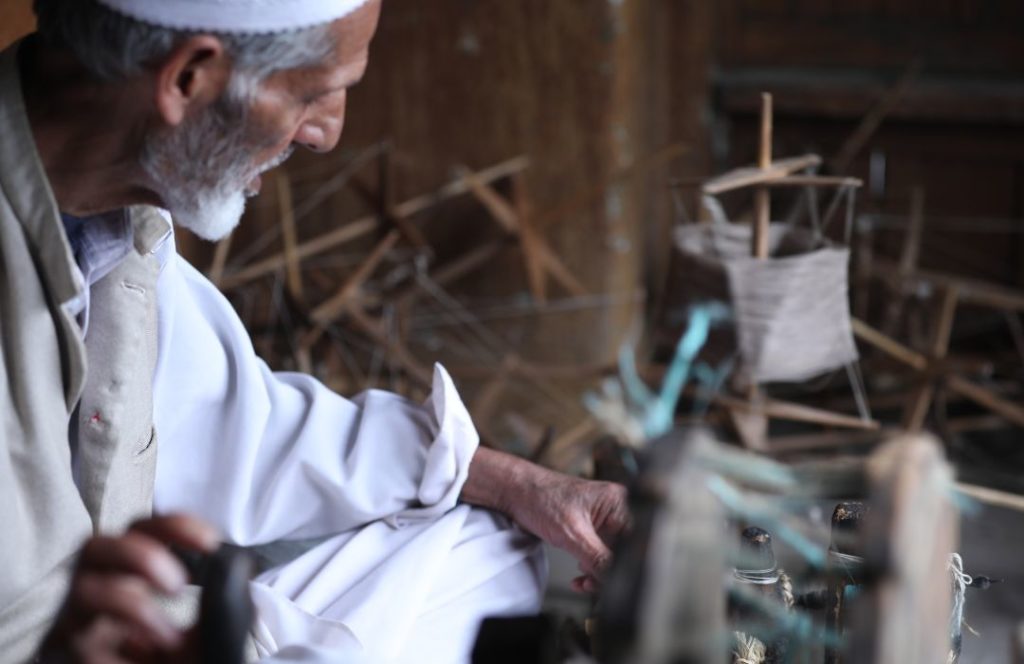
After the cleaning process, Cashmere wool is sent for spinning. Women spin Cashmere on a wooden spinning wheel called 'yinder'. The spinning wheel helps to create long threads of Cashmere yarn out of the lump of cleaned wool. The threads are strung together and sent to the factory where large wooden hand looms await
Handloom is used to weave Cashmere yarn and produce fabric. The handloom too is made of wood and is more traditional than modern. Hence more work is done manually on it. As soon as threads of Cashmere arrive, they are mounted on the loom heddles and two or more workers start weaving it. Thus a fabric is brought into existence, and this fabric is the Cashmere fabric. Shawls, scarves, and throws are obtained from this large fabric and sold to customers all over the world.
Also read: WHICH COUNTRY HAS THE BEST CASHMERE IN THE WORLD?
Why is Cashmere throws expensive?
The procurement and processing of Cashmere wool is a difficult task. At times, producers visit the high-altitude regions of Ladakh themselves, even if the travel is dangerous. But fine Cashmere is procured, come what may. After this challenge, Cashmere is processed in several steps manually, which again takes months or sometimes even years to complete. Hence, anything made from Cashmere, even a baby blanket, is expensive and very well deserved. Hence large shawls, and blankets, too, are expensive. Since an average throw is about 50 inches by 60 inches, it uses more fabric. It is hence pricey.
Cashmere throws are costly because of a number of factors that affect both the material's price and the workmanship required to make them.
First of all, obtaining cashmere is a difficult and uncommon task. It originates from the velvety undercoat of cashmere goats, which are mostly found in arid areas such as Tibet, Kashmir, and Mongolia. It takes the fiber from multiple goats to make a single throw because each goat only produces 150 grams of usable Cashmere annually. The delicate and time-consuming procedure of harvesting cashmere, which often involves hand-combing the goats during the spring molting season, raises the price even further.
Furthermore, cashmere is well known for its opulent attributes, including its exceptional warmth, softness, and light weight. It takes expert craftsmanship to guarantee that the throw retains its softness and durability because the fine fibers are challenging to prepare and weave. Cashmere is a highly sought-after fabric because of its long-lasting quality, elegant texture, and inherent insulating qualities. Cashmere throws are more expensive because of their uniqueness and the handmade methods used to make them.
Also read: WHAT IS PASHMINA CASHMERE?
Trendy Ways of using Cashmere throws
Cashmere throws are no longer just useful; they are now a stylish addition to both fashion and home décor. Here are a few modern applications for them:
Furniture Layering : To create a warm, opulent impression, drape a cashmere throw over the back of a bed, sofa, or armchair. It quickly improves the decor of any space by adding warmth and texture. A common approach to add softness and sophistication to contemporary rooms is to layer a throw with cushions or other textiles.
Oversized Accessory: Cashmere throws can be worn as an oversized wrap or shawl in addition to being used for home décor. Throwing them over the shoulders adds elegance and warmth, making them ideal for chilly evenings. They are a multipurpose travel accessory because of their dual purpose.
Accent in Outdoor Spaces: To create a stylish, welcoming ambiance in outdoor areas like patios or balconies, use a cashmere throw. When draped over a bench or lounge chair, it provides warmth on chilly evenings and elevates outdoor seating arrangements.
Travel Partner: Cashmere throws provide a comfortable layer for lengthy flights or road excursions, making them great travel accessories. They combine functionality and style while on the road, making them ideal for remaining warm without lugging a heavy blanket.
You can appreciate the warmth, softness, and elegance of cashmere throws in a variety of contemporary ways by combining them into your unique style and home décor.
Sustainable Cashmere Throws
With an emphasis on ethical sourcing and ecologically friendly methods, sustainable cashmere throws are made to maintain the opulent characteristics of cashmere without endangering the planet's or the animals' well-being. A key component of sustainable cashmere production is the cautious handling of cashmere goats, which includes non-injurious combing or shearing techniques. Smaller farms that put animal welfare first and refrain from overgrazing, which can damage the delicate ecosystems of places like Mongolia and Kashmir, are frequently the source of cashmere for sustainable brands.
Sustainable cashmere throws are made with consideration for lessening their impact on the environment in addition to ethical sourcing. This entails employing more environmentally friendly production techniques, like the use of natural colors, water conservation, and production energy minimization. Many firms also prioritize local, artisan-driven production over large manufacturing in an effort to lessen their carbon footprint. While maintaining the warmth and softness for which cashmere is renowned, sustainable cashmere manufacturing contributes to maintaining the delicate environmental balance.
Sustainable cashmere throws are also frequently made to last, which promotes intelligent consumption. Properly maintained, high-quality cashmere can retain its warmth and softness for many years. By spending money on long-lasting, ethically produced throws, buyers are selecting a product that promotes environmentally friendly methods and lessens the need for frequent replacements, supporting a slower, more sustainable fashion trend. These throws are a thoughtful addition to any house or wardrobe because they represent affordable, classic luxury.